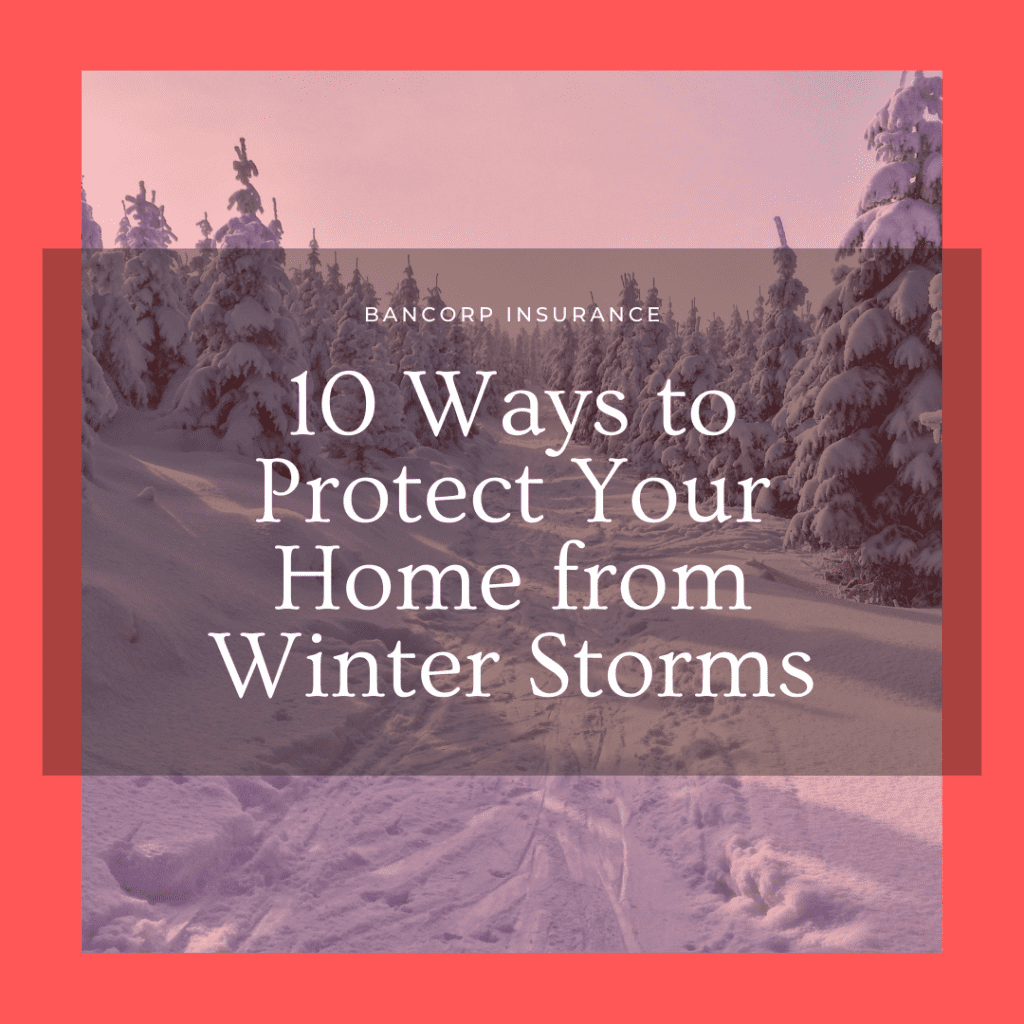10 Ways to Protect Your Home from Winter Storms

Even though Fall has just begun, the Farmers Almanac is already predicting an extended Winter forecast for the 2022-2023 season. December 21, 2022, is the first day of the official Winter, but if predictions are accurate, you could start seeing Winter conditions much earlier. And it’s not predicted to let up until late March.
With this extended forecast, you’re going to be looking at a greater risk from Winter Storms in the area. Over the years, we’ve heard of many types of claims in the area from Winter related events and as such we have compiled our top 10 things that you can do to protect your home this Winter.
10 Tips to Minimizing Winter Weather Risks
1. Prevent Ice Dams
The best way to prevent ice dams is by keeping the entire roof at the same temperature as the eaves. This is done by increasing ventilation, adding insulation and sealing off potential air leaks that might warm the underside of your roof. Use these tips to prevent ice dams on your home:
Close Attic Air Leaks — Most heat loss in a home comes from air leaks caused by unblocked walls, cracks around light fixtures, gaps in drywall, cracks around chimneys, access hatches and other ceiling damage. While they can be tough to stop, you can climb into your attic and use foam and caulk to plug the leaks. In addition to mitigating ice dams, this also helps you save energy and reduce your heating and air conditioning bills.Ventilate Eaves and Ridges — Right vents and continuous soffit vents help circulate cold air under the entire roof. Both types of vents should have the same size opening and have at least one square foot of opening for every 300 square feet of the attic floor.Add insulation — The more insulation on the attic floor, the more heat stays where it belongs. Check with your local building department to find out how much insulation your attic needs.
Learn more about preventing ice dams here.
2. Installing Gutter Guards
Installing gutter guards can keep derbies from blocking the flow of water away from your home. Gutter guards can be purchased from most hardware stores. Checkout Lowe’s DIY tutorial on how to install gutter guards.
3. Trim Trees
Trimming trees and dead branches from around your home is part of living in Central Oregon, whether to create a barrier against wildfires or to prevent damage in the Winter. The weight of ice and snow can cause tree limbs to fall on your roof or crush your car or outbuildings.
4. Prepare Your Porch
Repair broken steps and install handrails. Grabbing a handrail can break a fall on ice and snow. Remove trip hazards such as season decor or pots from steps so that if deep snowfall occurs, they are not buried and become an unknown trip hazard.
5. Keep Fireplaces, Stoves and Chimney’s in Working Order
Clean your chimney before using your wood stove or fireplace for the season. Keep the flu closed when you are not using the fireplace. According to the National Fire Protection Association the most recent statics show there were 26,900 chimney fires causing $290 million in property damages and 40 people lost their lives.
If you are using an electric fireplace, inspect the unit to ensure it’s in properly working order. That cables are free from damage or fraying. Ensure safe placement of the unit away from blankets and other furniture and that it’s not a trip hazard to humans or pets.
The Oregon Employment Department Explains Paid Leave Oregon
6. Insulate Everything
Add extra insulation to attics, basements and crawl spaces. Wrap exposed pipes with pipe insulation and repair any broken or cracked pipes. You want to keep the cold out and the heat in.
7. Prepare Your Plumbing System
Install an emergency pressure release valve in your plumbing system. This will protect the system against increased pressure caused by freezing pipes and can help prevent your pipes from bursting.
8. Regulate Your Home Temperature
Keep your house at least 65 degrees, the temperature inside your walls will be much cooler, and you want to make sure your pipes do not freeze. Regulating your home temperature can also save money on your utility bill as it avoids the high and low spikes when the temperature rises and falls.
9. Allow Faucets to Drip When the Temperature Drops
When the temperature really drops, allowing your hot and cold-water faucets inside to drip can keep water flowing which helps to prevent freezing. Do not do this with outside faucets! Those need to be winterized and stay winterized until the threat of freezing temperatures has passed for the season. In the event you get frozen pipes, know where the shut off value is for your water. If your pipes do freeze the quicker you can shut off the water, the more likely you will keep your pipes from bursting.
10. Perform an Annual Fire Alarm Test and Replace the Batteries
Make sure your smoke alarms are working properly. Because of heating unit malfunctions and chimney fires winter house fires are common. You want to keep your family safe and get them out of your home in plenty of time.
Many people in our area leave their homes for the winter. If you leave your home for a period of time, turn off the water to your home. Leave your heat on to at least 50 degrees, open cabinet doors under your sinks so you can keep pipes from freezing. Hire someone or ask a neighbor to check on your home on a regular basis. That way if something goes wrong you can have it fixed before more damage is done. Also, just by having someone drop by on a weekly basis you can protect your home from vandalism or burglary.
Standard homeowners’ insurance policies cover winter-related disasters such as burst pipes, ice dams, damage caused by weight of ice or snow, as well as fire related losses due to wood stoves and heating units. Melting snow can inflict significant damage to property. Once again flooding is not covered under your homeowner’s policy. You can buy flood insurance from the National Flood Insurance Program or Bancorp also works with private insurers who offer flood insurance to homeowners.
Bancorp’s insurance agents are available to provide you with a free review and consultation. Contact Us – Bancorp Insurance Call 800-452-6826
Disclaimer: This content is provided for general information purposes and is not intended to be used in place of consultation with our agents.




